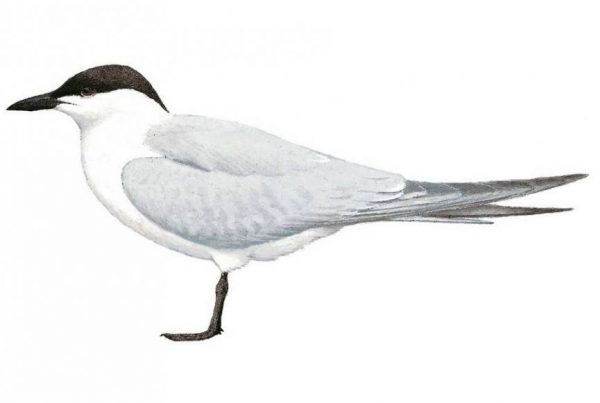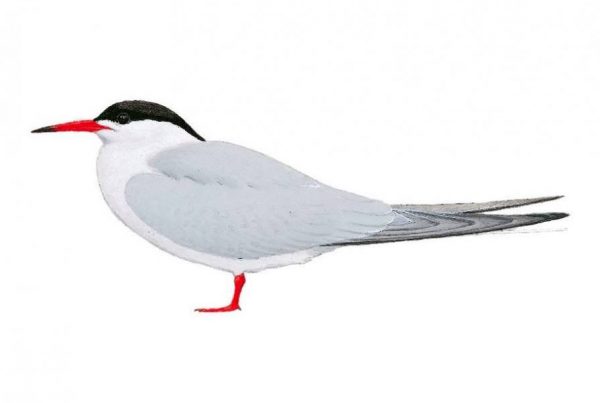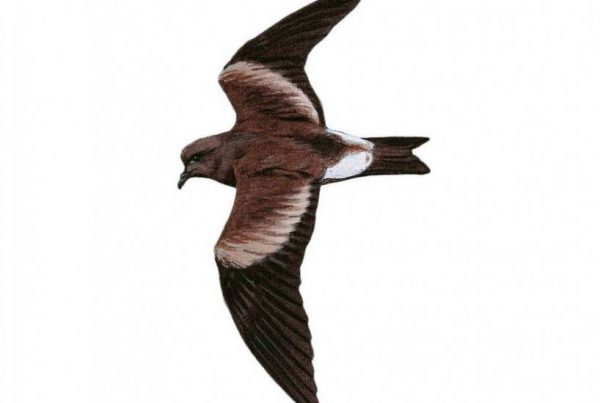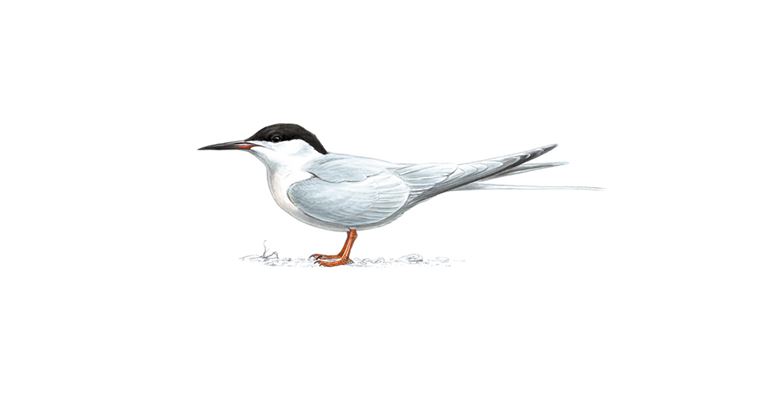
The Roseate Tern is not often seen away from its breeding sites, most of which are on small islands off-limits to visitors. In the Azores, they may seen between April and November as some pairs breed in the archipelago. The latin name dougallii refers to a Scottish physician Dr Peter McDougall. The vernacular English name « Roseate » refers to the pink breast of the bird in breeding plumage.
CHARACTERISTICS
- Latin name: Sterna dougallii
- Order: Charadriiformes
- Family: Lariade
- Length: 33-38 cm
- Weight: 92-135 gr
- Wingspan: 72-80 cm
- IUCN Status: Least concern
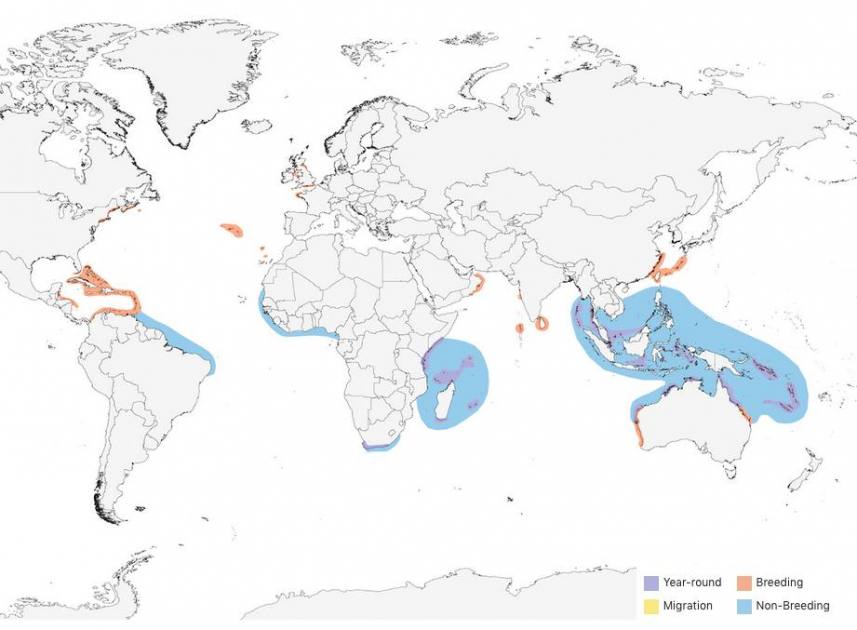
Source: Map Lynx Edicions/BirdLife International
DESCRIPTION
Important: Birds species have different identifying features depending on sex, age and season.
Eye color: Black
Beak: Black/brown & Red long beak with a medium thickness
Leg color: Red (summer), black (winter)
Feather colors: White, Grey, Black. Also pink-purple when breeding.
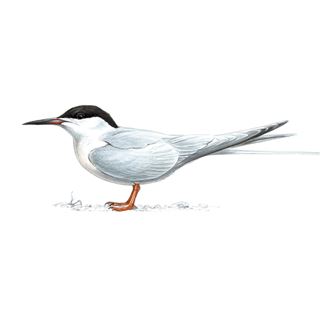
Adult breeding summer plumage
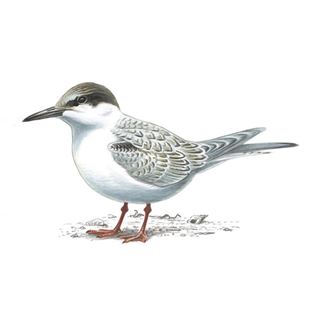
Juvenile Plumage
LIFE HISTORY
DIET
Roseate Terns are especially feeding on small fish and very rarely on crustaceans. They are more specialized on schooling fish species than the Common Terns. Roseate Terns forage mainly by plunge-diving, contact-dipping or surface-dipping. They fly into the wind, hover briefly and dive, usually from heights of 1–6 m.
REPRODUCTION
The reproduction takes place from April to August. The beak of the Roseate Terns is changing color during the year depending on the season (and the activity that is related to the season. e.g., reproduction). In April their beaks may be almost black and become more red in July before becoming blacker again in September. The incubation of 1-2 eggs (creamy brown with some black patches) lasts at around 21-26 days. The juveniles will reach the fledgling stage, first flight, at around 22-30 days.
VOCAL BEHAVIOR
Roseate Terns emit a distinctive sound very fast and disyllabic chiv-vick. A staccato kekekekekekekeke is used to attack when other birds are approaching the nest or a danger.
Illustration by Ian Willis.






